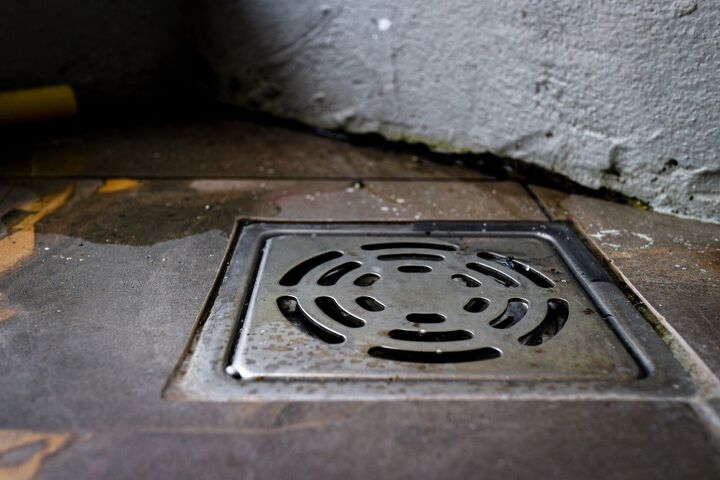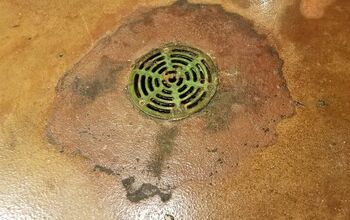What Is The Drain Hole In My Basement Floor? (Find Out Now!)

If you’ve ever spent time checking out your basement floor, you may have noticed that it has a drain hole. You might assume that this drain hole has something to do with draining excess water. But do you know exactly what the drain is, how it works, and what system it connects to?
The drain hole in your basement floor acts as an outlet for unwanted water and debris in your home. It’s made up of a drain cover grate, a catch bowl, a drain pipe, and a plumbing trap. It might connect with the sewer system, a sump pit, or a sewer pit with an ejector pump.
Do You Need Basement Drainage Channel Installation?
Get free, zero-commitment quotes from pro contractors near you.

What Is A Basement Drain Hole For?
The main purpose of a basement drain hole is to eliminate unwanted water from your home. Basement drain holes function as an outlet for leaking water and wastewater. In some cases, basement drain holes can connect to the sewer system of your house.
If your basement drain hole connects with your sewer system, it can drain various appliances in your home. For example, it can take care of excess water associated with washing machines, water softeners, and basement laundry sinks.
What Are The Parts Of A Basement Drain Hole?
If you look at your basement drain hole, you’ll see the drain cover grate and not much else. Underneath the cover grate, there are other parts of the drain. A catch bowl, drain pipe, and plumbing trap are located under the grate.
Catch Bowl
The catch bowl is the primary part of the drainage system. It maintains proper drainage of water and also catches debris. The debris settles to the bottom of the bowl.
Drain Pipe
While debris settles to the bottom of the catch bowl, liquids are drained through the drain pipe. This drain pipe usually connects to the home’s overall plumbing system.
Plumbing Trap
A plumbing trap is another part of the basement drain hole. It is a curved piece of piping that can be found underneath the drain. Plumbing traps are sometimes called p-traps because of their shape.
The plumbing trap in your basement floor drain creates a barrier by retaining water inside its curve. This keeps sewer gas from rising up through the drain and into your home.
Materials
The materials your basement drain is built from depends on its age. Newer drains are often constructed from PVC piping. Older drains are usually built from cast iron or clay tile.
Location
The drain hole in your basement floor is always located at the lowest point of the basement. This way, all water in the basement flows toward it and can easily be drained.
Where Does The Drain Hole In My Basement Floor Go?
It can be difficult to determine where the drain hole in your basement floor goes. Just looking at the drain cover grate isn’t likely to give you many clues.
However, knowing about the plumbing system in your home can be helpful in figuring out where the drain hole leads. There are three main possibilities: the sewer system, a sump pit, or a sewer pit with an ejector pump.
Sewer System
Basement drain holes most often connect with your house’s sewer system. When this is the case, it can drain multiple appliances in your home. These include basement laundry sinks, washing machines, and water softeners.
Potential Issues With Drains Connected To The Sewer SystemMost of the time, drains connected to the sewer system prevent unwanted odors from filling your basement. However, you may still encounter sewage smells from time to time. This usually happens when the trap beneath the drain is dry, or if the plug for the cleanout is missing.
There are two ways to prevent this problem. First, be sure to replace missing plugs. Second, pour water down the drain to wet the trap every couple of weeks.
Backflow is another common issue with drains connected to the sewer system. When the main drain in your home is clogged, this can lead to sewage coming up through the drain. Then, the sewage can enter your basement. Luckily, installing a backflow valve should fix the problem.
Sump Pit
It’s also possible that the drain hole in your basement floor is connected to a sump pit. A sump pit is a hole with a gravel base that collects water. It is located in the lowest part of your basement.
The sump pump sits inside the sump pit. When water enters the sump pit, an activator turns on the sump pump. Then, the sump pump moves the water out of your home using pipes. The pipes move the water so that it runs away from your house’s foundation and doesn’t lead to water damage.
Sewer Pit With Ejector Pump
A third possibility is that the drain hole in your basement floor leads to a sewer pit and ejector pump. Like the sewer system, a sewer pit can drain appliances like your washing machine and water softener. Homes with basement laundry rooms or bathrooms often have sewer pits with ejector pumps.
The sewer pit collects water that accumulates indoors from multiple sources. These might include humidifiers, floor drains, and HVAC condensation. When water collects in the sewer pit, the ejector pump acts to pump the material into the sewage system.
Do You Need Basement Drainage Channel Installation?
Get free, zero-commitment quotes from pro contractors near you.

Related Questions
Why is my basement drain backing up?
There are a few reasons your basement drain could be backing up. Usually, the problem isn’t with the drain itself, but with another part of your home’s plumbing system. The three most common causes of backup are clogged drain lines, sewer line clogs, and sewer line damage.
Why is my basement drain gurgling?
Gurgling is a common sign that your basement drain pipe is clogged. When you hear a gurgling sound, something is preventing air and water from moving through the drain regularly.
Is my basement floor drain connected to the sewer?
Most basement floor drains are connected to your home’s sewer system. It’s also possible that your basement floor drain connects to a sump pit or sewer pit with an ejector pump.

With a lifelong passion for writing plus strong enthusiasm for home improvement and DIY projects, joining the team at Upgraded Home was an easy choice. Jessica Allen likes to share helpful information with current and aspiring homeowners. Aside from writing, Jessica loves doing yoga, playing the piano, and dabbling in graphic design.
More by Jessica Allen



























